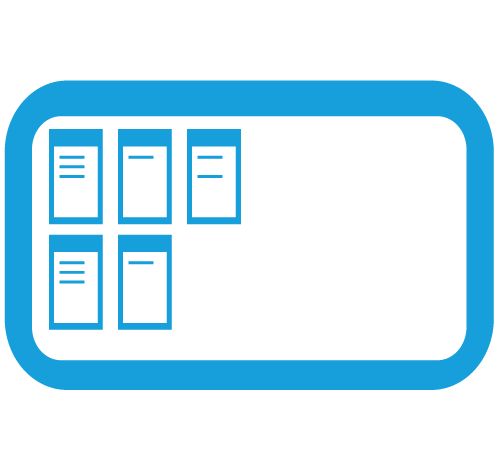Marketing
5 Ways to Beef Up Your Menu Designs
As part of a massive brand makeover, fast-casual restaurant chain Panera is revamping the design of its menus. Next-generation Panera locations will feature fully digitized menus both in the cafe and in the drive-thru lane. Panera’s partner in this effort is branding agency ChangeUp.
While you might not need to enlist a design agency or create a digitized version to elevate your restaurant’s menu design, you can learn a lot from the best practices that are out there. And you might be able to earn more profit in the process. Menu engineer Gregg Rapp says regularly tweaking the design of your menu can lift profit by 10%.
But, according to restaurant consulting firm Aaron Allen & Associates, “there are no rights or wrongs” when it comes to menu design. “What works with some establishments fails at others.”
Here are five ways to beef up your menu designs to maximize sales and profit.
1. Produce Something Eye-Catching
You know that old saying, “You never get a second chance to make a first impression”? Well, this adage definitely applies to menus.
Polling by Gallup found that the average customer spends 109 seconds scanning a menu. That’s less than two minutes.
“This is the time … you have to get your message to them. The time it takes to read a menu and make a decision needs to be addressed in your menu design and presentation,” according to an article written by a professor at Georgia State University’s Cecil B. Day School of Hospitality Administration.
Canva, which makes an online design tool, says this 109-second window means a menu must be easy to scan. This includes incorporating easy-to-find dish names and clear headings for different sections.

2. Limit the Use of Photos
While it may be tempting to load up your menu with photos of menu items, you should think twice about that approach.
Rapp says including one photograph per page and pairing that with one menu item can increase sales by as much as 30%. However, he cautions that putting photos on a menu can “cheapen” your menu, so he recommends that high-end restaurants avoid photos altogether.
“As you increase the number of items that are highlighted with visual cues, the impact that these cues have on your bottom line will decline and your menu may begin to look cluttered,” Rapp advises.
3. Focus on the Wording
You obviously want the images on a menu to be attractive. But don’t overlook the wording that appears on the menu.
A study of 276 restaurant customers published by the Journal of Hospitality & Tourism Research found that a concept known as “customer information expectation of restaurant menus” is influenced by nutrition information, production information and food preparation. Translation: You might want to think about including this information on your menus if you already don’t. Doing so might help boost customer satisfaction.
“Improper presentation of information on restaurant menus can lead to customer dissatisfaction, a loss of profitability, and could influence the ultimate failure of a restaurant operation,” the study says.
 4. Be Descriptive With Menu Items
4. Be Descriptive With Menu Items
Do you want your customers’ mouths to water when they’re skimming your menu? Be descriptive in how you present menu items.
A six-week experiment involving 140 customers found that descriptive menu labels (such as “Grandma’s zucchini cookies” or “succulent Italian seafood filet”) increased sales by 27% and improved attitudes toward the food, toward the restaurant and about visiting the restaurant again. However, descriptive labels didn’t bump up the amount of money a customer is willing to spend on a labeled item.
“If descriptive labels are used sparingly and appropriately, they can improve sales and post-consumption attitudes of the food and the restaurant,” the researchers say.
5. Pay Attention to Pricing
Most customers are price-sensitive. But did you know that how you present menu prices makes a difference?
A study done by researchers at Cornell University’s Center for Hospitality Research used three pricing formats for menus: dollar sign ($00.00), no dollar sign (00.00) and written-out price (zero dollars).
“While the numerical manipulation did not significantly affect total spending when compared to such non-menu factors as party size or length of time at the table, the price formats did show noticeable differences,” the study says. “Contrary to expectations, guests given the numeral-only menu spent significantly more than those who received a menu with prices showing a dollar sign or those whose menus had prices written out in words.”
The researchers noted that psychology suggests the written-out format would have generated higher sales, but it did not.
Menu design is critical. But remember to give considerable thought to the online ordering experience, too. DCRS offers a suite of online ordering products and services that can take your online sales to the next level.

















